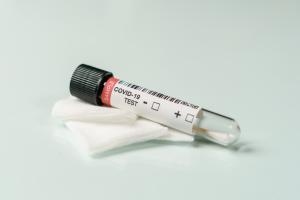Dr. David Samadi: The viral mutation of COVID-19 is not as scary as it sounds
The viral mutation of Covid-19 will not be as scary as once we thought to be.
Finally another good news about the fight against Covid-19. If there would be mutations in the future it will be for a weaker version and not as scary as the original one.”
NEW YORK, NEW YORK, UNITED STATES, July 20, 2020 /EINPresswire.com/ -- The media has a found a new fear-mongering tactic it’s zeroed in on: COVID-19 has mutated. Since most of the general public has limited knowledge on viral mutations, this only leads to confusion and misinformation on social media. What our researchers and scientists already know is over the past few months, the virus has been mutating but at a very slow pace. Is this a major concern or is there no need to panic?— Dr. David Samadi
Understanding viral mutation
For some, one of the scariest words in the English language is mutation. It sounds sinister, to be feared and up-to-no-good. That’s why the 1963 comic fictional mutant superheroes called the X-Men, were described as “freakish,” despised, and ultimately considered scary. Millennials likely remember a different overly-muscled, grossly drawn mutant superhero, the Teenage Mutant Ninja Turtles, warriors who lived in the sewers of New York City as they battled crime.
In reality, the word mutation simply means change. And for the coronavirus of SARS-CoV-2 (COVID-19), this was to be expected. This is nothing new and when these changes happen, they generally are not a major concern or threat. This is to be expected since every virus mutates as its part of their life cycle as a virus.
Viruses, like COVID-19, are microscopic parasites, generally much smaller than bacteria that are unable to replicate themselves or survive on their own outside of a host. Like it or not, viruses use us as their “host.” Viruses’ genetic material, which consist of either DNA or RNA, are packed inside a protein shell. DNA stands for deoxyribonucleic acid while RNA is ribonucleic acid and both carry genetic information.
COVID-19 is an RNA virus and the building blocks of RNA, called nucleotides, provide the code to build amino acids that make up the virus’s proteins. When a mutation in a virus occurs, this means one of these nucleotides in the virus’s genetic material, has changed or mutated. Since change is a way of life for viruses, once a virus infects a person’s cells, it begins to replicate itself by making copies of its genetic code.
But as they replicate, many viruses lack the ability to prevent mistakes or mutations from happening. However, SARS-CoV-2 is rare in that it does have the ability to proofread mistakes but at a very slow pace. Mutations within COVID-19 have been occurring but keep in mind, mutations are not necessarily all bad. Mutations may result in a weaker virus than before or the changes will be so slight that the difference in the disease transmission and fatality rates are barely noticeable. This appears to be what’s happening with COVID-19.
What we now know about COVID-19’s mutation
The genome of COVID-19 was first sequenced in January and ever since, scientists knew mutations likely would occur and have been on the lookout for them ever since. Sure enough, mutations have been detected and so far in total, researchers have found 14 strains of SARS-CoV-2.
Back in March, researchers from the Los Alamos National Laboratory believe that the mutation likely responsible for the vast majority of infections across Europe and the United States is called D614G. A study from Scripps Research Institute in Florida also agrees with this assessment.
Scientists do agree that the D614G strain appears to be more contagious than the strains present in the U.S. before March (one reason why certain states are experiencing COVID-19 surges) but so far, the cases of severe illness or mortality rates have not spiked. The other good news is it does not appear that the mutation will slow down or change the process of developing a vaccine since it most likely will be effective against variants of this mutation. The reasoning for this belief is because the mutations have happened slowly and are very similar to the original sequence of COVID-19.
Other good news from the mutations is what’s being seen in certain states like Arizona that has experienced a surge in new diagnoses of the virus. Back in April, the mutated D614G of COVID-19 was identified as the dominant strain in this state. However, the fatality rates have been dropping. Since July 9, a total of 112,671 confirmed cases of COVID-19 have been diagnosed with 2,038 COVID-19 deaths statewide, mainly among younger adults. This translates to a 1.8% death rate from the infection. Other encouraging news is the death rate among high risk groups such as the elderly have also fallen as well. Back on May 15, Maricopa County in Arizona reported 17% of those who had the virus and had died were 65 and older; now the fatality rate of that same age group has dropped to 10%.
What do we do now?
To summarize so far what you’ve read mutations are characteristic of all infectious diseases. Whether or not the mutation has much to do with the prevailing strain depends on how well the virus transmits itself in actually making people sick. The good news of mutations is that while they may be more contagious, they also usually cause less severe illness.
Instead of allowing the media to raise your anxiety, rather, choose to stay focused on what matters most keeping you safe from the infection. Viral spread is only as easy as we make it for them. Remember, this virus cannot survive without us. If we do our part of social distancing, protect our most vulnerable citizens (the elderly and those with chronic disease), frequent hand washing, and avoiding touching our eyes, mouth, and nose, guess who survives best – we do. If you’re sick, stay home. The more we can blunt COVID-19’s spread, the sooner we can get back to normal.
I’m optimistic we will beat back COVID-19. Mutations may sound scary but in the scheme of everything going on, there are more important things to worry about.
david b samadi
roboticoncology
+1 2123655000
email us here
battle against Covid-19



